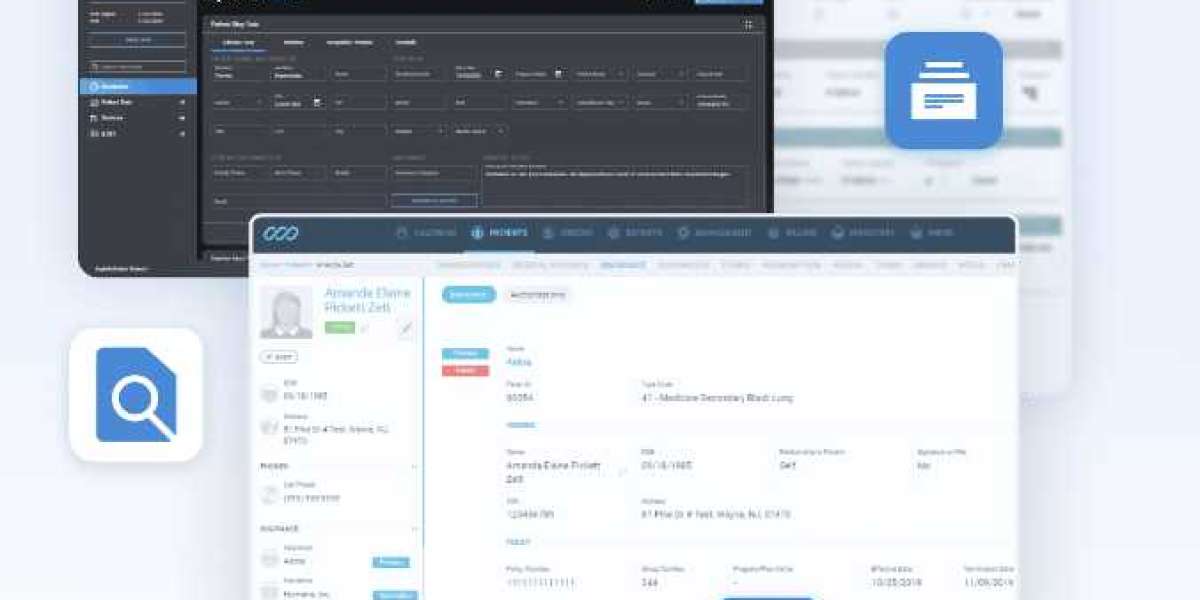As technology continues to evolve, so too does EHR software, incorporating new innovations and trends to improve functionality, interoperability, and user experience. This article explores the future of EHR software, highlighting key innovations and trends to watch in the coming years.
1. Artificial Intelligence and Machine Learning
Artificial Intelligence (AI) and Machine Learning (ML) are poised to transform EHR systems by enhancing data analysis, automating routine tasks, and providing actionable insights.
a. Predictive Analytics: AI-driven predictive analytics can analyze vast amounts of patient data to forecast potential health issues before they arise. By identifying patterns and trends, AI can assist in early diagnosis and personalized treatment plans, improving patient outcomes and reducing healthcare costs.
b. Natural Language Processing (NLP): NLP technology enables EHR systems to interpret and process unstructured data from clinical notes and patient records. This allows for more accurate data extraction, improved coding, and enhanced search capabilities, making it easier for healthcare providers to access relevant information quickly.
c. Automated Clinical Documentation: AI-powered voice recognition and transcription tools can automate clinical documentation, reducing the time clinicians spend on administrative tasks. This allows healthcare professionals to focus more on patient care, enhancing efficiency and reducing burnout.
2. Interoperability and Data Exchange
Interoperability remains a significant challenge in healthcare, as disparate EHR systems often struggle to communicate effectively with one another. The future of EHR software will focus on improving data exchange and integration across different platforms.
a. Interoperability Standards: The adoption of interoperability standards such as Fast Healthcare Interoperability Resources (FHIR) and HL7 v2.x will facilitate seamless data exchange between EHR systems, electronic prescribing systems, and other healthcare applications. These standards will enable healthcare providers to access and share patient information more efficiently, improving care coordination.
b. Health Information Exchanges (HIEs): Health Information Exchanges (HIEs) will play a crucial role in facilitating data exchange across healthcare networks. By creating centralized repositories of patient data, HIEs can enable providers to access comprehensive patient histories, reducing duplication of tests and enhancing continuity of care.
c. Blockchain Technology: Blockchain technology holds promise for secure and transparent data exchange in healthcare. By providing a decentralized and immutable ledger, blockchain can enhance data integrity and security, addressing concerns related to data breaches and unauthorized access.
3. Patient-Centric EHRs
The future of EHR software will increasingly focus on improving the patient experience and empowering individuals to take control of their health.
a. Patient Portals: Enhanced patient portals will offer users more comprehensive access to their health information, including test results, medication lists, and appointment schedules. These portals will also enable patients to communicate directly with their healthcare providers, schedule appointments, and request prescription refills.
b. Personal Health Records (PHRs): Personal Health Records (PHRs) will complement EHR systems by allowing patients to maintain their health information independently. PHRs can integrate with EHR systems to provide a complete view of an individual’s health history, facilitating better self-management and personalized care.
c. Mobile Health Applications: Mobile health applications will continue to grow in popularity, providing patients with tools to track their health metrics, access educational resources, and receive personalized recommendations. Integration with EHR systems will ensure that data from these apps is seamlessly incorporated into patient records.
4. Enhanced Data Security and Privacy
As EHR systems handle sensitive patient information, ensuring robust data security and privacy will remain a top priority.
a. Advanced Encryption: Advanced encryption techniques will be essential for protecting patient data both at rest and in transit. Encryption algorithms will continue to evolve to safeguard against emerging threats and unauthorized access.
b. Identity and Access Management (IAM): IAM systems will enhance security by controlling access to EHR systems based on user roles and permissions. Multi-factor authentication and biometric verification will add additional layers of security, ensuring that only authorized individuals can access patient data.
c. Data Anonymization: Data anonymization techniques will be employed to protect patient identities while allowing for the analysis of health data. By removing or masking personally identifiable information, anonymization can support research and data-sharing initiatives without compromising patient privacy.
5. Integration with Wearable Devices and IoT
The integration of EHR systems with wearable devices and the Internet of Things (IoT) will provide healthcare providers with real-time data and insights.
a. Wearable Health Devices: Wearable devices such as fitness trackers and smartwatches can continuously monitor vital signs, physical activity, and other health metrics. Integration with EHR systems will allow healthcare providers to access this data, enabling more informed decision-making and personalized care.
b. Remote Patient Monitoring (RPM): Remote Patient Monitoring (RPM) solutions will facilitate the continuous tracking of patients’ health conditions from their homes. Data collected through RPM devices will be transmitted to EHR systems, providing healthcare providers with up-to-date information and enabling timely interventions.
c. Smart Medical Devices: Smart medical devices, including connected inhalers and glucose monitors, will contribute to more comprehensive patient records. These devices can transmit data directly to EHR systems, improving accuracy and providing a holistic view of patient health.
6. Cloud-Based EHR Solutions
Cloud-based EHR solutions offer scalability, flexibility, and cost-efficiency, making them an attractive option for healthcare organizations.
a. Scalability and Flexibility: Cloud-based EHR systems can easily scale to accommodate the growing volume of patient data and adapt to changing organizational needs. This flexibility allows healthcare providers to access and manage data from any location, enhancing operational efficiency.
b. Cost Savings: Cloud-based solutions can reduce the need for on-premises hardware and IT infrastructure, resulting in cost savings for healthcare organizations. Additionally, cloud providers typically offer regular updates and maintenance, reducing the burden on internal IT staff.
c. Disaster Recovery and Data Backup: Cloud-based EHR systems offer robust disaster recovery and data backup solutions, ensuring that patient data is protected in the event of system failures or natural disasters. Automated backups and redundant storage can minimize the risk of data loss and downtime.
7. User Experience and Usability
Improving the user experience and usability of EHR systems will be critical for enhancing clinician satisfaction and productivity.
a. Intuitive Interfaces: Future EHR systems will feature more intuitive and user-friendly interfaces, reducing the learning curve for new users and improving overall usability. Customizable dashboards and streamlined workflows will enable healthcare professionals to access and manage information more efficiently.
b. Mobile Accessibility: Mobile accessibility will be a key focus, allowing healthcare providers to access EHR systems from smartphones and tablets. Mobile-friendly designs and applications will enable clinicians to review patient records, enter data, and communicate with colleagues while on the go.
c. Integration with Clinical Decision Support (CDS): Integration with Clinical Decision Support (CDS) tools will enhance the usability of EHR systems by providing real-time recommendations and alerts based on patient data. CDS tools can assist in clinical decision-making, reduce errors, and improve patient outcomes.
8. Regulatory and Compliance Changes
EHR software will need to adapt to evolving regulatory and compliance requirements to ensure that healthcare organizations remain in adherence with industry standards.
a. Health Data Regulations: Regulations such as the Health Insurance Portability and Accountability Act (HIPAA) and the General Data Protection Regulation (GDPR) will continue to influence EHR software development. Compliance with these regulations will be essential for protecting patient privacy and ensuring secure data handling.
b. Value-Based Care and Reporting: As the healthcare industry shifts towards value-based care models, EHR systems will need to support new reporting requirements and performance metrics. EHR software will incorporate features to facilitate reporting on quality measures, patient outcomes, and cost-effectiveness.
c. Certification and Accreditation: EHR systems will be subject to certification and accreditation processes to ensure they meet industry standards and regulatory requirements. Ongoing certification will help maintain the quality and reliability of EHR software.
Conclusion
The future of EHR software is marked by exciting innovations and trends that promise to enhance healthcare delivery, improve patient outcomes, and streamline administrative processes. As artificial intelligence, interoperability, patient-centric solutions, and advanced security measures shape the evolution of EHR systems, healthcare organizations will benefit from more efficient, effective, and user-friendly tools. Staying abreast of these trends and embracing emerging technologies will be crucial for healthcare providers seeking to leverage the full potential of EHR software and advance the quality of care.








